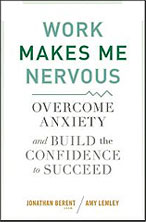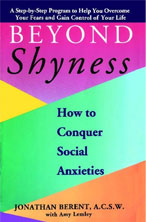A Tell-Tale Sign: How Recognizing Social Avoidance Can Help Prevent Mass Murder
Jonathan Berent, L.C.S.W.
“I can understand why kids shoot up schools.” “I get it. I’d probably never do it. But I get it.”
Since beginning my clinical practice in 1978, I have heard many psychotherapy patients say they relate to mass murderers like Aurora, Colo., movie theater shooter James Holmes.
But my patients are not psychopaths. They suffer from social anxiety, a fear of humiliation and rejection that leads to avoidance and often depression. They feel isolated, alone, rejected, desperate, disempowered—and enraged. From what we know of Holmes, he shares these feelings.
Disempowerment is what leads to rage—sometimes conscious and sometimes not. Eric Harris and Dylan Klebold, the teens who orchestrated the Columbine massacre, bonded as loners who sought bloody revenge after years of being picked on. Seung-Hui Cho, the monster behind the Virginia Tech shootings, isolated himself, manifesting a dramatic case of selective mutism—a phobia of talking that is widespread though little understood by the mental health and medical professions. Such killers explode. And then they may implode, turning their anger on themselves at the end of their rampages, like the Columbine and Virginia Tech killers did.
More often, social anxiety sufferers exist in a silent hell. Millions are affected, yet few seek treatment. In fact, a 2005 study published in the Archives of General Psychiatry found social anxiety is present in 64 percent of attempted or completed suicides. In May of this year, Brandon Thomas, a 20-year-old college student, committed suicide because of his “unbearable blushing,” a condition commonly caused by anxiety that can be so debilitating it has spawned a new medical industry. Physicians perform a sympathectomy, a controversial procedure that severs major nerves to prevent blushing and sweating.
Disempowerment kills, whether the resulting self-loathing implodes or explodes. And now, in Colorado, we see once again the effects of disempowerment at their very worst. It’s true that James Holmes’s specific motive is still in question. But one thing is for sure: Holmes is yet another emotionally dysfunctional individual who sought and achieved power over his deep-seated rage through a well-planned and successfully executed release of his inner demons.
Descriptions of Holmes seem familiar: He “rarely socialized,” had “no friends,” and was “an introvert in all aspects of life.” But unlike these other shooters, he left no “digital imprint”—no Facebook, no MySpace, no blog. Yet in an instant, Holmes channeled his rage and made a worldwide impact. He achieved power by attracting media attention and creating societal hypervigilance.
Our response to such tragedies is now systematized, as this case demonstrates. The police were there in minutes. Counselors stepped in to support survivors. The investigation commenced, and the analysis began. The media gave us the play-by-play. Pundits pointed to inadequate gun control, to violent video games, to bullying.
Still, a fundamental need remains: We want to know why. We want to know how to prevent this from happening again.
Many people look at mass murderers as subhuman. Tragically, to those few who can relate to the issues of disempowerment, social rejection, and anger, they are possible role models.
These “role models” possess great intellect, but little social or emotional intelligence. They have been bullied, belittled, or ignored. They are narcissistic, self-righteous, and enraged. They’ve responded to the social criticism they’ve heard or imagined with self-loathing.
How can we stop them? By developing productive diagnostics and treatment for social anxiety. The best preventive measure is to identify and treat avoidance early on—in time to make a difference. Medicalizing the condition cannot resolve it. Traditional psychotherapy cannot resolve it. To resolve social avoidance, we must help people address painful underlying issues such as self-loathing and rage, not merely the depression or social angst on the surface.
“She’s just shy. She’ll grow out of it.” Such is the collective mantra of parents and professionals. But it’s a good bet social anxiety will worsen with time; it usually does. The earlier the underlying dynamics that drive social anxiety can be resolved, the more potential there is to prevent a pathological expression of rage, whether outward or inward.
Psychotherapist Jonathan Berent, L.C.S.W., is the author of Beyond Shyness: How to Conquer Social Anxieties (Simon & Schuster), Work Makes Me Nervous: Overcome Anxiety and Build the Confidence to Succeed (Wiley), and Social Anxiety: The Untold Story (Andrew Kukes Foundation for Social Anxiety). For more information about social anxiety, visit www.socialanxiety.com.
Self-Help and Treatment Options
- Free Audio CD from Social-Anxiety.com
- Social Anxiety: The Untold Story
- Beyond Shyness: How To Conquer Social Anxieties
- Work Makes Me Nervous
- Comprehensive Self-Therapy Audio Program
- Public Speaking Anxiety Self-Therapy Audio Program
- “Warm Hands Cool Face” A Self-Help Clinical Program for Blushing Anxiety & Erythrophobia
- The Berent Method: High Performance Therapy for Social-Anxiety
- Telephone/skype therapy available worldwide
- Selective Mutism Seminar Audio CD/MP3 Program
- Self-Help Program for Parents of Children with Selective Mutism
- The Sociability Questionnaire
- Tip of the Month Club
- Social Therapy and The Learning Disabled
- Free Parent Addiction Survey


